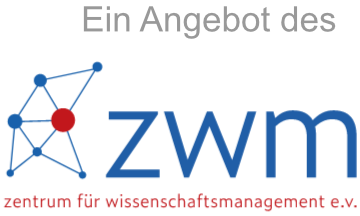Sie sind hier
| Kontakt: | Hans-Jörg Schulz | ||
| Ort: | 8200 Aarhus, Dänemark | ||
| Web: | http://phd.scitech.au.dk/for-applicants/apply-here/february-2019/view-space-inte… | Bewerbungsfrist: | 01.02.19 |
View Space Interaction for Visual Analytics
Applications are invited for a PhD fellowship/scholarship at Graduate School of Science and Technology, Aarhus University, Denmark, within the Computer Sci-ence program. The position is available from 1 May 2019 or later.
Research area and project description:
These days, data analysis is no longer this long-winded process that churns on the data until hours later a final result has been computed. With current hardware speedups and new computational paradigms like Progressive Visual Analytics and Approximate Query Processing, a computational analysis run by the machine and an interactive visual exploration performed by the user can be carried out side by side with results of the computation and of the exploration informing each other. This way, a well-run visual data analysis can turn almost into a synchronous col-laboration scenario between human analyst and machine.
This PhD project sets out to investigate how to best facilitate this collaboration by developing novel visual interaction techniques for such a closely intertwined com-putational data analysis and interactive visual data exploration. As computations are used quite differently alongside a running analysis – from silent background processes that once deployed only chime in with new results every now and then (e.g., progressive probes), to visually very present foreground processes that re-quire active direction and steering by the user (e.g., computational smart lenses) different techniques to interact with them will need to be explored.
Research questions to pursue in this project are:
- Which metaphors are appropriate for the otherwise invisible computa-tional process and to which kinds of visualization and interaction do they lead? (e.g., computational analysis as a tool to be used by the analyst, as a resource to be distributed between different analytical objectives, data subspaces, or levels of granularity, as well as an independent helper that can be tasked by the user and reports back when needed)
- Which progressive processes – data transmissions (e.g., streaming data or progressive data loading), analytic computations (e.g., progressive cluster-ing or density estimation), and visualizations (e.g., progressive rendering or iterative layouting) – can be shown and interacted with in which ways?
- Can and should the computational steering be coupled with the interactive visual exploration? For example, a zoom-in on a region of interest in the view could at the same time focus the running computation on that particu-lar data subspace as well. Or should both complement each other, so that if the user looks at some specific data subset, the computational process monitors the remainder of the data for out-of-sight changes?
Work on this PhD topic will be conducted in close collaboration with the DABAI project (https://dabai.dk), which provides the datasets and analysis scenarios on which the developed visualizations are tested.
Qualifications and specific competences:
To apply for the position, you must have a relevant Master’s degree and excellent computer programming skills. Prior experience in at least one of the following ar-eas is of advantage: data visualization, data science, computer graphics, human-computer interaction, or database technologies.
You are expected to bring or develop the necessary soft skills for working in teams, as well as for managing and communicating your research progress. The same holds for the necessary hard skills in software development and scientific writing.
More information online:
http://phd.scitech.au.dk/for-applicants/apply-here/february-2019/view-space-interaction-for-visual-analytics/
Applicants seeking further information are invited to contact:
Assoc. Prof. Hans-Jörg Schulz
Department of Computer Science
University of Aarhus
Åbogade 34, 8200 Aarhus N, Denmark
E-mail: hjschulz@cs.au.dk
Web: http://hjschulz.net
- Bisher keine Ordner/Dateien vorhanden.
-
2019_interaction.pdf
145.39 KB | 07.01.19 ( )
-
Keine Inhalte
Analyse von Nutzeraktivitäten in linearen und nicht-linearen Lernvideos
In diesem Beitrag werden verschiedene Ansätze zur visuellen Analyse von Nutzeraktivitäten in linearen und nicht-linearen Lernvideos behandelt. Ziel ist es dabei, durch geeignete Visualisierungsinstrumente besser zu verstehen, wie Lernende einzelne Videos nutzen und sich innerhalb von Videokollektionen verhalten. Ausgehend von der Erhebung und Aufbereitung von Logdaten werden Visualisierungen für die Betrachtung von einzelnen Lernenden und Lerngruppen vorgestellt. Das Nutzerverhalten in nicht-linearen Videos respektive Hypervideos wird durch Verlaufspfade, Segment-Zeit-Diagramme und Graphen veranschaulicht.
Lesen Sie auch das Editorial und weitere Artikel dieser Ausgabe
Quellen:Erschienen in: Zeitschrift für Hochschulentwicklung ZFHE Jg.9 / Nr.3 (April 2014)
- Bisher keine Ordner/Dateien vorhanden.
-
1404_WIMO_Nutzeraktivitäten Lernvideos_Seidel.pdf
571.86 KB | 10.06.14 ( )
-
Keine Inhalte


